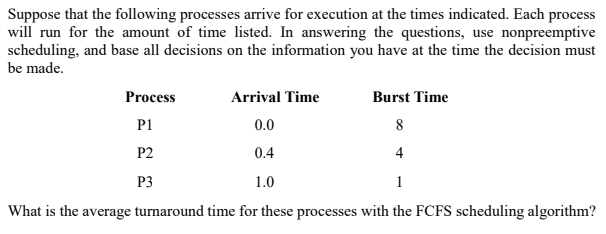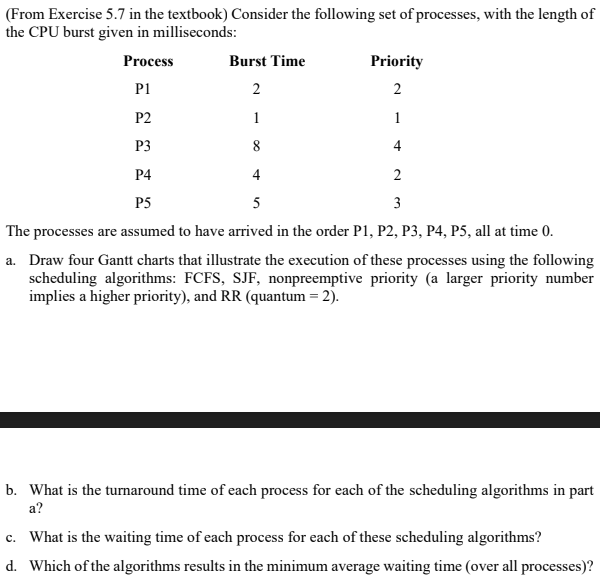Answered step by step
Verified Expert Solution
Question
1 Approved Answer
1.1 1.2 1.3 1.4 1.5 1.6 Suppose that the following processes arrive for execution at the times indicated. Each process will run for the amount
1.1

1.2

1.3

1.4

1.5

1.6

Suppose that the following processes arrive for execution at the times indicated. Each process will run for the amount of time listed. In answering the questions, use nonpreemptive scheduling, and base all decisions on the information you have at the time the decision must be made. What is the average turnaround time for these processes with the FCFS scheduling algorithm? What advantage is there in having different time-quantum sizes at different levels of a multilevel queueing system? (From Exercise 5.2 in the textbook) Discuss how the following pairs of scheduling criteria conflict in certain settings. a. CPU utilization and response time b. Average turnaround time and maximum waiting time c. I/O device utilization and CPU utilization (From Exercise 5.7 in the textbook) Consider the following set of processes, with the length of the CPU burst given in milliseconds: The processes are assumed to have arrived in the order P1, P2, P3, P4, P5, all at time 0 . a. Draw four Gantt charts that illustrate the execution of these processes using the following scheduling algorithms: FCFS, SJF, nonpreemptive priority (a larger priority number implies a higher priority), and RR (quantum =2 ). b. What is the turnaround time of each process for each of the scheduling algorithms in part a? c. What is the waiting time of each process for each of these scheduling algorithms? d. Which of the algorithms results in the minimum average waiting time (over all processes)? (From Exercise 5.10 in the textbook) Which of the following scheduling algorithms could result in starvation? a. First-come, first-served b. Shortest job first c. Round robin d. Priority (From Exercise 5.15 in the textbook) Explain the differences in how much the following scheduling algorithms discriminate in favor of short processes: a. FCFS b. RR c. Multilevel feedback queues
Step by Step Solution
There are 3 Steps involved in it
Step: 1

Get Instant Access to Expert-Tailored Solutions
See step-by-step solutions with expert insights and AI powered tools for academic success
Step: 2

Step: 3

Ace Your Homework with AI
Get the answers you need in no time with our AI-driven, step-by-step assistance
Get Started


